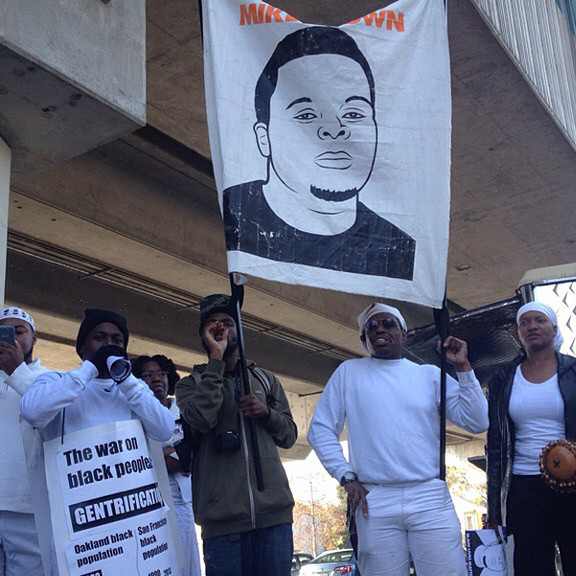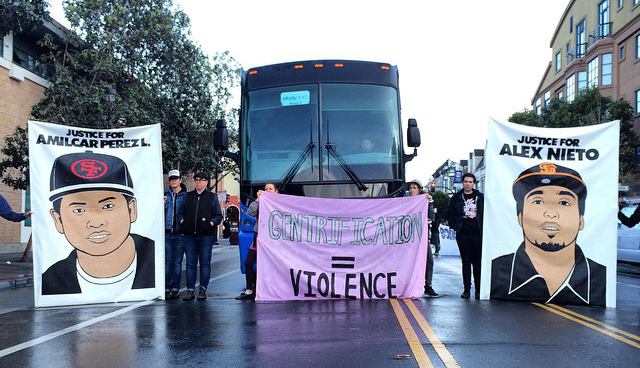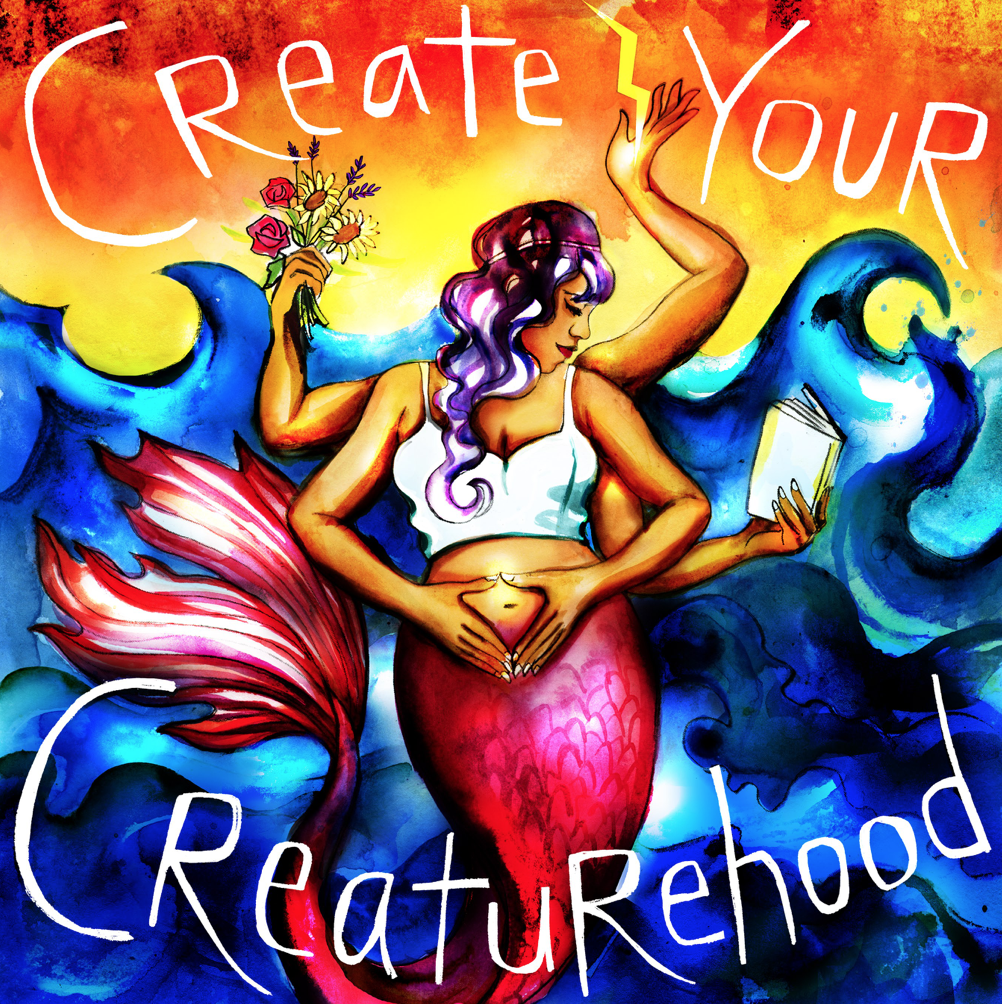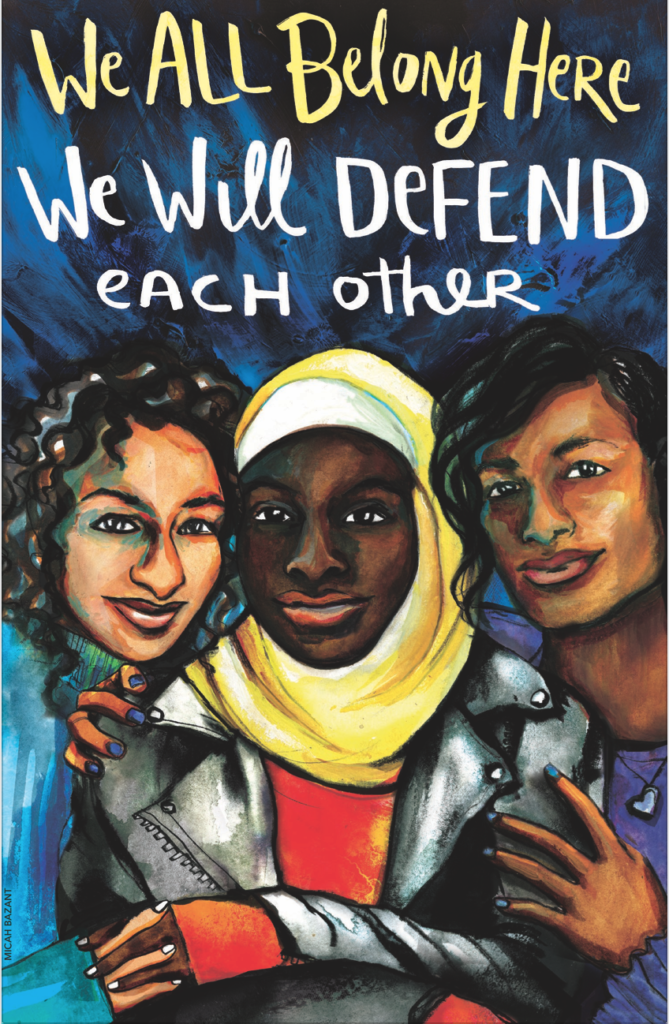Oree Originol
What is your journey as an artist?
I have been a creative individual as long as I could remember. I was that kid in kindergarten who would win all the drawing contests and I remember my mom paying me a dollar to draw pictures of Jesus Christ for her. I always had a big interest in art and sort of identifying myself as an artist early on in my childhood. In middle school, I got involved in sports and stopped drawing, but I always retained a creative edge. I pretty much just developed a deeper interest in art naturally, and it’s something that has been carried with with me throughout my life.
What inspires you to create art, especially related to activism and social justice?
So I’m from North East LA, I identify as Xicano, both my parents migrated to this country long ago from Mexico, and I grew up in a neighborhood where there were gang activity was prevalent. It wasn’t as bad as some other places, but I remember in the 90s there was some crazy stuff that would go down in my hood. As I grew older I became a bit more radicalized mostly from the type of music I would listen to like hip hop and punk. I started to consider the demographic in my neighborhood and in others that had problems with poverty, drugs, gangs, that at the same time experienced more police brutality, incarceration, homelessness, etc… I realized In LA these were primarily Black and Mexican/Central American communities which I was a part of. Connecting these dots made me realize I had to be involved somehow in addressing these issues which I ultimately found myself in art and culture as my lane of resistance. When I moved out to the Bay, the political climate really shaped me further, especially when I met Favianna Rodriguez. She’s a prominent artist from Oakland who does a lot of art and activism around issues like immigration and climate justice. She co-founded the organization, CultureStrike.net, in which I became a full time employee in 2012. In my couple years of working for them I was involved in several projects collaborating with mostly undocumented artists around the country which was how I got my introduction to activism and also using it in a way to engage community. Once I stopped working for CultureStrike, I went back to the drawing board to figure out what was going to be my next creative endeavor. At the time, there was a lot of conversation that erupted online about Trayvon Martin, the acquittal of George Zimmerman and also #blacklivesmatter. Black Lives Matter is an organizing project was started in July 13, 2013, by three black women: Alicia Garza, Opal Tometi and Patrisse Khan-Cullors. The movement that ensued was what inspired my Justice For Our Lives project.
It wasn’t until New Year’s Day of 2014, I came home from the annual vigil for Oscar Grant at the Fruitvale BART station, and I felt inspired to create a portrait of him to honor his name and share online. Shortly after, I came across the story of Ramarley Graham online who had been killed in New York so I did a piece on him too and I kept going. That’s how my project, Justice For Our Lives, started and has been inspired by a long history of art, activism and organizing for justice in our communities. The Bay Area arts and activism community in general has shaped my approach over the years and has motivated me to continue producing artwork with social impact.
What has your experience been as an artist in the Bay Area, especially regarding gentrification and displacement?
So, I live in the Bay Area, but I was not born here. Gentrification is front and center out here because it’s affecting a lot of Bay Area natives not to mention the original Ohlone natives who have been here for thousands of years. When you’re talking about displacement, you’re talking about a lot of people who are not from this area and move in and benefit off of everything that the Bay Area has to offer like housing, jobs, culture and other resources. And even though I’m not a white person, I do see myself as someone who takes up space here from other artist individuals who are actually from here. I’ve been able to benefit from the opportunities that I’ve been given as I make a living as an artist. So I feel that I have a responsibility to use my talents to be able to have an affect in some way that supports the community that has accepted me and taken me in. My experience with gentrification and displacement has been one as an agent for change but also as one that has been affected by it being that I am currently dealing with my own level of homelessness and has also been a struggle to find work that pays a living wage because making a living as a full time artist without educational background is very difficult.
Do you think art creates or resists gentrification?
I think art has power in general. Sort of like in Star Wars — you can use the force for good or you can use the force for evil. It’s the same in our reality — art can be used as a form of resistance, as a form of establishing yourself as a community. But then it also has the power to erase that community and whitewash it with something that represents something totally different or in opposition. Recently, in the mission, there was a mural that was gone over by another artist. The mural that was there prior was created by Precita Eyes and other SF residents. The person who owned that building hired another artist who is not from SF and without consultation of the artists responsible for the old mural, to go over it and show a different message that basically contradicted the previous mural on multiple levels. Art has the power to do things like that but we gotta make sure that prevailing art needs to be on the side of the resistance at all times, especially in the hood but when we’re talking about how to maintain justice in our community, it’s going to take more than just art. All the wheels need to be turning, and art is just one of them but I do think it’s the most potent tool to be used in the way we shape society
Are there any changes that you can to see in the next few years in the Bay?
I think the struggle is going to get more intense. The Bay Area seems to be like a capital of capitalism that still has a bit more space for growth. I’ve seen a lot of changes in the short 8 years I’ve been living here but I cannot make a point on how much it has really been transformed from the perspective of someone who grew up here. The political climate is getting real heated around the country and we haven’t even completed a year in this presidential term. Either way, it doesn’t matter. It’s been growing for a long time, even throughout the Obama years, so the fact that we now have Trump as president is a result of the racism and hate in America that has been brewing for so long. It won’t go away until there is a proper response to it all and it will take more than marching or tweeting about it online for real change to occur. I really don’t know what changes to expect in the Bay Area but I know the level of danger will rise and the outcome of it all will determine what direction we will head down the road. At this point it will take a considerable amount of sacrifice for us to win. That’s for sure.
You can learn more about Oree Originol’s work here.
Micah Bazant

What is your journey in becoming an artist? What inspires you to create art?
Well, I always liked to make art since I was a kid, but I think in capitalism, being an artist is a scary thing, especially because a lot of families are worried about economic security. Being an artist was really a scary thing and I definitely was discouraged from doing that. I also dealt with a lot of depression and times in my life when I wanted to be involved in social justice but art was kind of dismissed and was seen as something frivolous or something important for creating change. I didn’t make art for about 15 years. It was only about 5-7 years ago that I started making art again. It was really through my relationships with people in social justice movements and being inspired by other Bay Area artists like Melanie Cervantes and Favianna Rodriguez, Emory Douglas—they were doing really powerful work that was very effective and beautiful. So for the past 5 years it’s just been building and building.
How does art play a role in social justice and how is your art related to this?
I think that art has always been in the central part of all social justice movements, like the Civil Rights Movement, apartheid and today’s Black Lives Matter movement. I think that art is what connects us on an emotional and spiritual level. Unfortunately, people often are not moved by facts, were moved by relationships and by emotions. I think that art is one of the ways we can build power.
What message do you want your artwork to convey?
I work with a lot of different communities and parts of the social justice movement, so there’s not just one message. But in general, one of my goals is to show that a different world is possible. To show that we can reimagine things, that things have not always been the way they are: We don’t have to have these horrible prison systems, trans people don’t have to be criminalized. There are many different communities and change is possible. I also want to show the dignity in humanity, especially of the oppressed and the marginalized communities. I want to tell layered stories, so I often use text in my images to explain and show the different layers of experiences of people who are impacted by, for example, homophobia, racism, transphobia and poverty. That can be a heavy lift, and I’m trying to do that through written word and visuals.
It seems that many of your pieces are portraits — why do you choose to depict people?
A lot of my art happens through deeply collaborative work through lot of people. I’m trying to show the humanity and dignity and power of the people who I’m working with and portraying. I’m trying to shift the power dynamic so that it’s not just me, a white artist making work about someone else’s experience and profiting from that. I’m trying to actually work in solidarity with people. They are the primary owners of the piece and the artwork exists because of them and their struggles and their lives. I think a lot of people with privilege are very self-segregated and are not in contact with people who are incarcerated or homeless or disabled or transgender. But I’m using portraits as a strategy to connect with people. I think eye contact is a very powerful and captivating force. For me, as a transgender person, there were years and years that I avoided eye contact with people because I had been really hurt by people and I wanted to avoid being noticed. It’s only recently that I’ve started being more open to eye contact and have experienced how powerful that is.
What is your experience as an artist in the Bay Area?
I’ve been here for about 20 years. I feel very inspired and nurtured by Bay Area art traditions. I mentioned the Black Panther Movement, Emory Douglas’ work, the Chicano Arts Movement, CultureStrike — these organizations have really been possibility models for me and have shown me how we can shift culture through artwork.
Do you think art creates or resists gentrification? Can it do both?
I think art definitely can do both. As artists, we need to be conscious of the way our work is either fighting or supporting white supremacy. For example, as a white artists I receive more money and resources for my art, so a big part of my work is about how my art can redistribute money and build cultural equity. Art institutions are incredibly white supremacist. For example, only 10 percent of arts funding goes to curators of color, 93 percent curators in museums are white, and nine-tenths of art critics are white. It’s just a very white-supremacist field, so I’m always trying to be aware of privilege, not just on the surface of what I create, but the entire process, from the conception of the idea to how the final process is being distributed. For example, who do I need to talk to and build relationships with to create a certain piece? Who should be coming up with that idea? Who is giving feedback and who is deciding what language? If we sell the art, who is getting that money? As I said, all my projects are jointly owned by the people who that art is about and they can do whatever they want with that.
What changes do you want to see art encouraging in the Bay over the next couple of years?
I would love to see more funding and institutional support for artists of color and for communities of color. I think that art will continue to be the lifeline of our justice movements and art will continue to create work to resist white supremacy and gentrification no matter what. No matter what happens, I know that part of my work is just continuing the struggle — in partnership with my fellow artists — to inspire people to create change.
Can you talk about your experience as a trans-identified artist?
I think part of being transgender for me is reimagining ourselves but, more importantly, reimagining a world that treasures us. Artistry has always been a way that transgender people fight back and survive. I just want to acknowledge my trans-ancestors and put my work in the context of that image. ≠
I’m going to be working with a large group of transgender artists and writers of color across the country to create work for transgender resilience on November 20th.
You can learn more about Micah Bazant’s work here.






